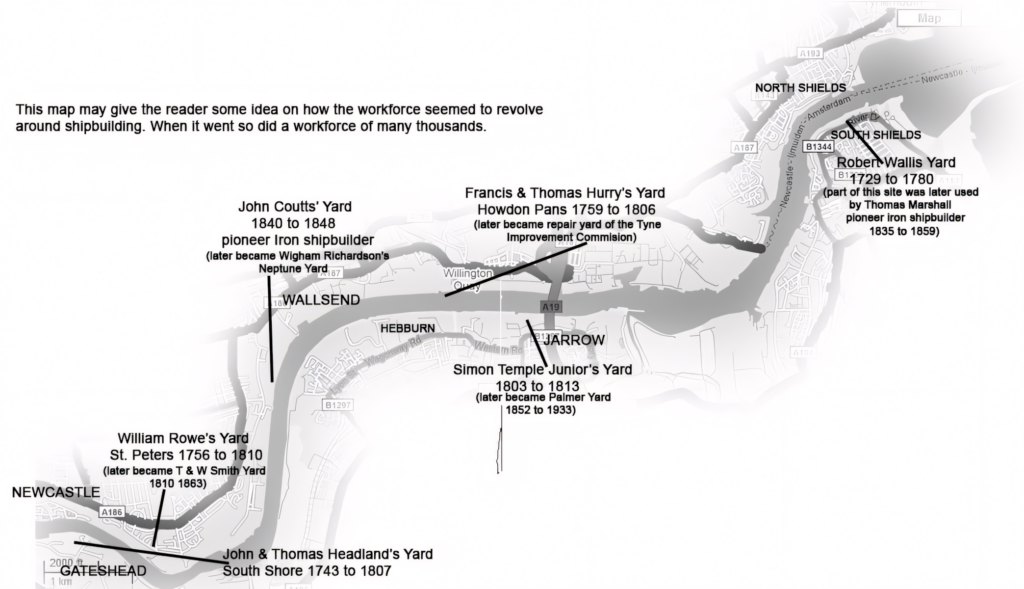On the south bank of the River Tyne, Simon Temple Junior’s shipbuilding yard was a hub of early wooden ship construction. In 1852, this industrious yard became part of Palmer’s – a pivotal moment in the history of Tyneside shipbuilding, as shown in the accompanying image of these historic yards along the river. This acquisition laid the foundation for an era of innovation and naval power.

Responding to a Nation’s Call: The Crimean War & HMS Terror
The outbreak of the Crimean War (1853-1856) presented Palmer’s with a significant opportunity. Capitalizing on the need for stronger naval defences, the company began supplying armour-plated battleships to the Admiralty. A landmark order arrived in 1856: HMS Terror, Palmer’s first ironclad launch and a truly unique vessel – better described as a floating arsenal. This marked a turning point for the shipyard, showcasing its ability to deliver cutting-edge naval technology.
A Reputation Earned, Though Action Delayed
Commissioned to challenge Russian forces and neutralize their base at Kronstadt in the Baltic Sea, HMS Terror was intended to be a key asset in the conflict. While the ship played a vital role in establishing Palmer’s reputation with the Admiralty for quality and innovation, it unfortunately never saw active combat. The war concluded shortly before its delivery. Despite this, the order solidified Palmer’s standing and paved the way for future contracts with the Royal Navy.

In 1862, HMS Defence was completed. Between 1872 and 1885, the coastal defense ships HMS Cerberus and HMS Gorgon were launched. Both vessels were followed by two fast dispatch ships for the Navy, HMS Surprise and HMS Alacrity. In total, Palmer’s shipyard built 100 warships for the Royal Navy.
Expanding a Naval Empire: Beyond HMS Terror
Following the success of Terror, Palmer’s continued to build impressive warships. In 1862, HMS Defence was completed, and between 1872 and 1885, the coastal defences ships HMS Cerberus and HMS Gorgon were launched. These were followed by the swift dispatch ships HMS Surprise and HMS Alacrity. Over the years, Palmer’s shipyard proudly constructed a total of 100 warships for the Royal Navy – a testament to their skill and dedication.
A Diverse Fleet & A Caring Legacy
Palmer’s expertise extended beyond warships. The company diversified its production to include cruisers, gunboats, merchant vessels, tramp steamers, oil tankers, steam colliers, and even magnificent sailing ships – their large sails evoking images of a bygone era of adventure. And Sir Charles Mark Palmer’s commitment went beyond industry; deeply concerned by workplace accidents, he established Jarrow’s first accident and emergency hospital through the efforts of his first wife, demonstrating a genuine care for the well-being of his community.